Will Gresson – 3 December, 2015
Central to the exhibition is Jacir's installation Material for a film (2004 - ongoing), a collection of fragments from the life of Palestinian intellectual and poet Wael Zuaiter that won the Golden Lion award at the Venice Biennale in 2007 for a Young Artist (under 40). Zuaiter was killed in Rome in 1972 by Israeli Mossad agents. At the time he was living in exile, working towards a definitive translation of 'One Thousand and One Arabian Nights' from Arabic into English while living in relative poverty.
There is an engaging tension in Europa, the new exhibition from Emily Jacir currently showing at Whitechapel Gallery in London. The work, including installation and film pieces dating back as far as 1998 is meticulous and beautifully constructed, its impact heightened by fantastic curation across multiple rooms in the gallery space. The title is loaded with meaning; ostensibly a reference to the significance of Italy and the Mediterranean in Jacir’s practice, it is also the name of a Greek Goddess of Phoenician origin. The story of her rape by Zeus (while he’s in the guise of a bull) - tying together elements of both Greek history and the mythology of the Levant - acts as a bridge between the continent and the artist’s native Palestine.
And therein lies the tension; while the work is undoubtedly both technically accomplished and visually captivating, there is an unspoken but inescapable political undercurrent throughout that takes much of it beyond the realm of art and places it firmly in the space of activism. Within this is the creation of a loaded social and political perspective that goes beyond an abstracted visual language into something altogether more complicated.
Central to the exhibition is Jacir’s installation Material for a film (2004 - ongoing), a collection of fragments from the life of Palestinian intellectual and poet Wael Zuaiter that won the Golden Lion award at the Venice Biennale in 2007 for a Young Artist (under 40). Zuaiter was killed in Rome in 1972 by Israeli Mossad agents. At the time he was living in exile, working towards a definitive translation of One Thousand and One Arabian Nights from Arabic into English while living in relative poverty. If this sounds vaguely familiar, it may be because Zuaiter’s death is the first shown in Steven Spielberg’s 2005 film Munich as part of ‘Operation Wrath of God.’ This was the Israeli response to the Munich Massacre at the 1972 Summer Olympics, where eleven Israeli Athletes were kidnapped, held hostage and eventually murdered by the Black September Organisation (BSO).
Jacir’s installation begins with a small black and white photo of Zuaiter’s bloodied body lying on the ground in the doorway of his apartment building where he was killed. From here the viewer moves along a path in a sort of self-contained square shape in the middle of the ground floor gallery space. Jacir followed Zuaiter’s life, documenting moments and pauses. The way the artefacts and other details are installed (photographs of the books found in English in Zuaiter’s apartment at the time of his death for example), simultaneously evokes both the museum and the labyrinth. This duality to both show and obscure is a useful way to understand what the artist is doing here, but this takes on another significance when you realise there is not one mention of Black September or the Munich Massacre anywhere to be found.
Zuaiter’s involvement in the plot has always been contested, with Israel maintaining he was in charge of a Rome Cell of the BSO, while others stated he was simply another exiled Palestinian intellectual, adrift in Europe and cut off from his homeland like so many others. There is much evidence to suggest the latter, less so perhaps the former, but the omission of this aspect altogether and the portrayal of Zuaiter as essentially another innocent Palestinian martyr, assassinated by Israeli spies, cements the work as a heavily loaded piece of political commentary. This sense can be found not only in this installation but to a certain extent, most of the other pieces that follow it.
Consider, for example, the gorgeous and intoxicating performance film featuring Austrian musicians Marwan Abado, Peter Rosmanith and Franz Hautzinger, showing in one of the upper gallery spaces. Entitled Entry Denied (a concert in Jerusalem), the work documents an aborted performance that was due to be held as part of the 12th Jerusalem Festival, the Song of Freedom concert in 2003. Although initially invited by the Austrian embassy in Tel Aviv and granted a visa by the Israeli Foreign Ministry in Vienna prior to traveling, Abado was subsequently detained upon arrival, refused entry for ‘security reasons’ and sent back to Vienna after twenty-four hours. The performance was instead filmed in an empty theatre in Vienna, and the results are both haunting and entrancing, rhythmic and sombre in equal measure.
Jacir’s piece here speaks to an increasingly well documented tactic used by the Israeli Authorities to systematically remove and restrict Palestinian citizens from their homeland. Abado was born in Beirut, Lebanon, to Palestinian refugees and is one of many who have had their foreign citizenship effectively used as a way of keeping them out of Palestinian territories. While there is much to this that rings tragically familiar, a part of me was left wondering what further research might add to the story, if other motives could be found to explain Abado’s denial of entry. In the end, his detention and deportation seem to be simply one more in a long line of grievous indignities faced by those of Palestinian heritage trying to reach their homeland from afar.
This pattern of disappearing Palestinian voices is also evident in Stazione (2008-09), another project which ultimately went unrealised (in its original form), during the Venice Biennale. The work called for the twenty-four vaporetto stops on the no. 1 route (a central water taxi path in Venice) to have their names translated into Arabic and written alongside the Italian original, creating a bilingual transport system through the centre of the city. Whereas in 2007 Jacir was celebrated, in 2009 she was censored, and the intervention was halted after a series of meetings with the vaporetto company and the municipalities. It exists now in documentation of what could have been, rather than what was, perhaps a useful metaphor for much of the discussion about the conflict from which so much of Emily Jacir’s work arises.
In some ways, many of the video works on show here in particular recall to mind some of Belgian artist Francis Alys’ work from Central and South America. Alys’ video works hint and nod towards the significant social and political tensions that have torn through the region throughout history. Where allegory and abstraction are the more familiar tools of his work however, Jacir’s clearly owes more to the aesthetic of the documentary, her pieces acting like a case study in the struggles of Palestinian nationalism and ongoing conflict in the Middle East.
Ultimately, it’s the way these works broach broader themes that adds to their strength, and moves the exhibition beyond the specific political tension of the artist’s background. Works like Change/Exchange, where the artist went from Bureau to Bureau changing dollars into francs and back until only coins that couldn’t be exchanged were left, speak to wider concerns of the moment. This work was made in 1998, and yet as the initial 100 Dollars dwindles down into spare change over the course of her documented performance (shown at the gallery through photos and copies of the exchange receipts), one can’t help but think of the current economic crisis and get the very real sense that Jacir is not the only one repeating a futile act into oblivion.
Will Gresson
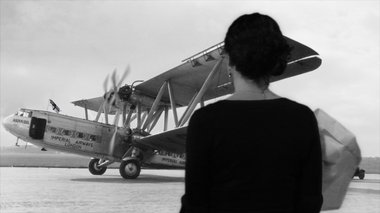
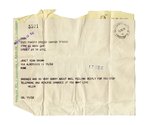
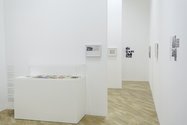
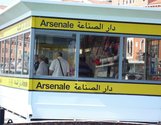
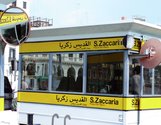
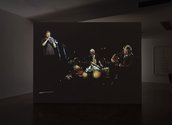
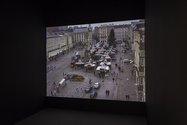
 Advertising in this column
Advertising in this column Two Rooms presents a program of residencies and projects
Two Rooms presents a program of residencies and projects

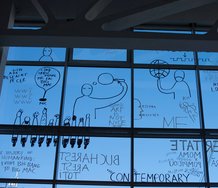
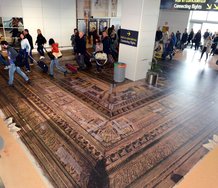
This Discussion has 0 comments.
Comment
Participate
Register to Participate.
Sign in
Sign in to an existing account.